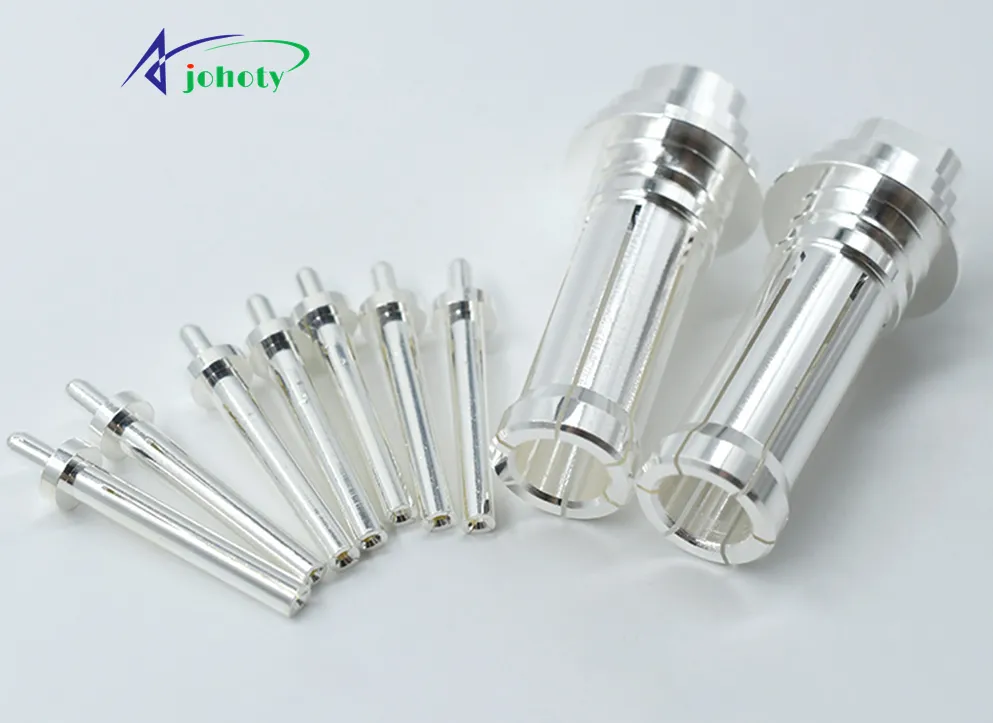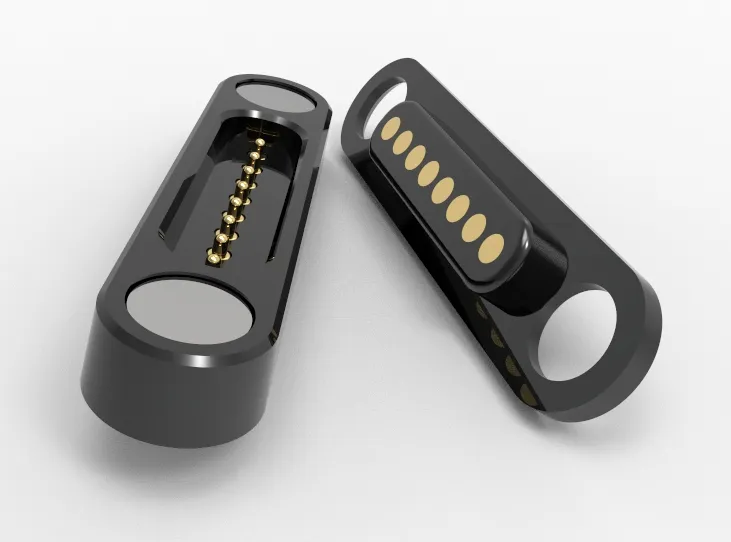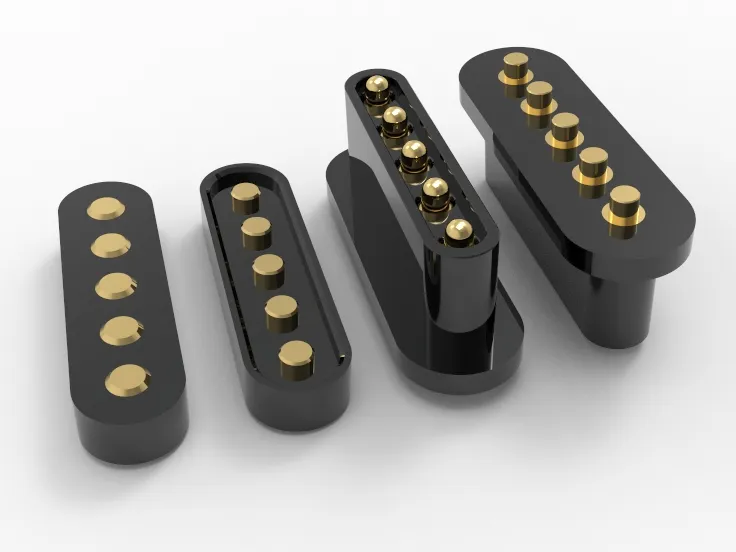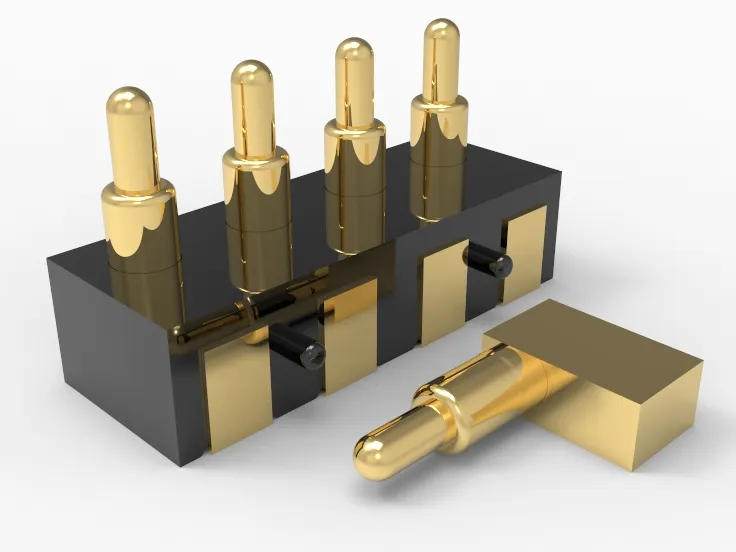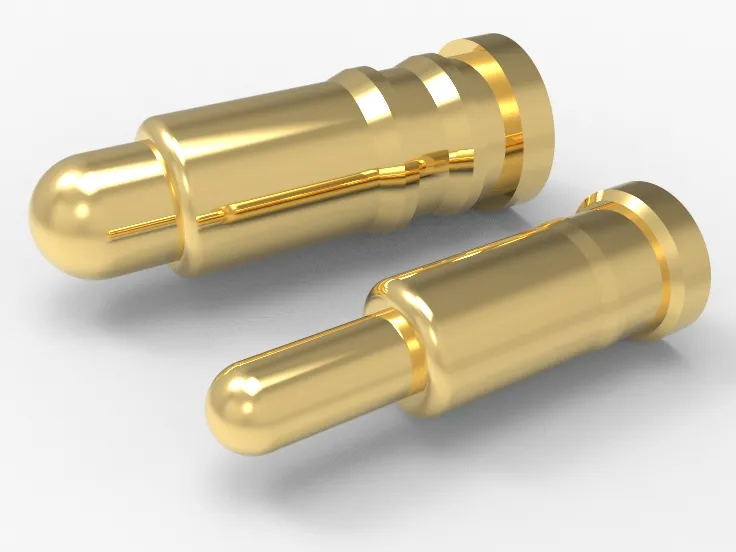What is a Contact Force? Understand Its impact on Pogo Pin Reliability and How It Contributes to Stable, Long-term Electrical Connections
Introduction: what is a Contact Force?
- In connector design, “contact force” is crucial but often overlooked. What is a contact force? It determines the stability of Pogo Pins and impacts the reliability and lifespan of electronic devices. How can we optimize contact force to ensure stable long-term connections?
- This article explores the principles and factors influencing contact force and reveals how to adjust it in high-precision connectors to maintain excellent performance under extreme conditions. With scientific methods and practical advice, we’ll show you how to design the most reliable Pogo Pins to stand out in a competitive market.
1. What is a Contact Force?
- Contact force refers to the strength of the interaction between two surfaces when they come into contact. In Pogo Pin connector, it is a key factor affecting connector performance. The strength of the contact force determines how steady and dependable the connection will be. Design considerations include maintaining appropriate contact force for long-term use.
- Contact force must be strong enough to ensure a stable electrical connection under vibrations, temperature changes, or other external factors. However, excessive contact force may accelerate wear, shortening the connector’s lifespan. Designers must balance stability and durability.
- In Pogo Pin design, materials and precision manufacturing techniques control contact force. Adjusting the spring’s stiffness and shape helps maintain stable contact force over time. Surface treatments like gold plating can also reduce contact resistance and enhance stability.
- Proper contact force design improves Pogo Pin performance and longevity, being key to long-term stability. Choosing the right contact force parameters and design methods enhances device reliability and user experience.
2. Factors Affecting Pogo Pin Contact Force
Here’s a breakdown of how to design and optimize Pogo Pin contact force for long-term stability:
- Material Choice: Pogo Pin tips are usually made from brass or beryllium copper due to their excellent conductivity and elasticity. However, the hardness and surface finishing (like gold or nickel plating) can affect contact force. Harder materials may offer higher contact force but can increase wear over time.
- Spring Design: The design of the spring is crucial for determining contact force. Factors such as spring length, wire diameter, material, and winding method affect its elasticity, which in turn impacts contact force. Precise calculation of the spring’s compression and required force is essential for stability.
- Contact Surface Shape: The shape of the Pogo Pin tip (flat, pointed, or spherical) affects contact area and pressure distribution. Different shapes suit different needs—pointed tips provide higher localized pressure but may increase wear.
- Environmental Factors: The environment can affect contact force. Temperature changes may cause material expansion or contraction, altering contact force. Humidity and corrosive gases can impact the cleanliness of the contact surface, affecting resistance and stability.
- Assembly Accuracy: The precision of Pogo Pin assembly is important. Any deviations or tolerance issues can lead to uneven contact force, impacting connection reliability. High-precision assembly ensures consistent contact force.
- Surface Treatment: Surface treatments, such as plating, prevent oxidation and optimize contact performance. Gold plating reduces contact resistance and improves corrosion resistance, but the thickness and uniformity of the coating are key factors.
- Lifespan: Repeated use can cause spring fatigue, surface wear, and contamination, leading to decreased contact force. Designing for durability and using measures like improved spring fatigue resistance or more wear-resistant coatings can extend lifespan.
- Load and Stroke: The load and stroke (compression distance of the pin) must be accurately matched to ensure proper contact force. Too much load can compress the spring excessively, while too little stroke might not provide sufficient contact force. Balancing these elements according to application requirements is crucial.
By addressing these factors, Pogo Pin contact force can be effectively optimized for long-term stable electrical connections.
3. How to Design the Optimal Contact Force for Pogo Pins?
Ensuring stable contact force is crucial in Pogo Pin design, as it impacts both performance and reliability. To meet specific needs, we carefully adjust the contact force from several angles. Here’s a streamlined look at the key aspects:
3.1 Material Choice & Spring Structure
- The contact force of a Pogo Pin is mainly determined by the spring material and design. For high-durability needs, we select materials like high-carbon steel or gold-plated springs. The shape and number of coils in the spring also affect the contact force. We fine-tune the spring’s stiffness through simulations to provide the right compression force.
3.2 Contact Point Design & Optimization
- The design of the contact points affects contact force directly. Different shapes, like pointed, flat, or domed tips, alter pressure and wear. We optimize these shapes for the application, and choose the right coating thickness and material to maintain long-term stability, especially under frequent use or harsh conditions.
3.3 Mechanical Simulation & Testing
- To ensure stable contact force, we conduct detailed simulations and tests. Finite Element Analysis lets us forecast how various materials and structures will respond when they’re put under stress. We then test these predictions and adjust design parameters to ensure the contact force stays within the desired range.
3.4 Environmental Impact & Longevity
- Contact force stability must also be maintained over time. Performance can be influenced by factors such as how hot or humid it is and the amount of dust around. We evaluate these factors, select materials, and optimize designs to counteract environmental effects. Accelerated life tests, like salt spray and temperature cycling, help us predict longevity and refine designs for longer use.
3.5 Customized Solutions & Client Needs
- We work directly with clients to get a clear picture of their needs and performance goals, ensuring we make the best Pogo Pin for their product. We offer tailored solutions, such as adjusting spring hardness, optimizing contact point shapes, and choosing durable coatings. We also provide sample versions for real-world testing and feedback.
These steps and details are crucial for designing Pogo Pins that meet customer needs and deliver long-term reliability and stability.
4. Common Issues and Solutions
During the design and use of Pogo Pins, customers often face contact force issues. Here’s a simple guide to common problems and their solutions:
4.1 Unstable Contact Force Causing Looseness
- Problem: Customers report that Pogo Pins lose contact force over time, causing looseness or poor connection. This is usually due to spring fatigue or wear on the contact surface.
- Solution: Use high-quality spring materials, like stainless steel or gold-plated surfaces, to enhance durability and wear resistance. Ensure the spring’s compression ratio and elasticity are suited for long-term use to avoid excessive compression and fatigue.
4.2 Excessive Contact Force Causing Damage
- Problem: Some customers experience too much contact force, making insertion difficult or causing damage to the contact points or housing. This often results from incorrect force estimation or inappropriate spring stiffness.
- Solution: Optimize spring design and adjust its stiffness to reduce contact force. Use tools like Finite Element Analysis (FEA) to simulate connector performance under different forces, ensuring the force meets electrical requirements without damaging the connector.
4.3 Environmental Changes Affecting Contact Force
- Problem: In extreme temperatures or humid environments, Pogo Pin contact force can vary, leading to unstable performance. As temperatures fluctuate, materials might stretch or contract, and humidity can cause them to oxidize or corrode.
- Solution: Use temperature-resistant, corrosion-resistant materials, and apply protective coatings, like gold or nickel plating. Design Pogo Pins with elastic compensation to handle size changes due to environmental factors.
4.4 Insufficient Contact Force Leading to Unstable Signal Transmission
- Problem: Customers report signal fluctuations or instability due to insufficient contact force, especially with high-frequency or high-current applications.
- Solution: Increase the initial contact force of Pogo Pins and add multiple contact points to share the load, ensuring stable signal transmission. Use materials with better conductivity to reduce contact resistance.
4.5 Uneven Contact Force Affecting Product Consistency
- Problem: In mass production, customers find variations in contact force between batches, affecting product consistency and reliability. This may be due to inconsistent manufacturing processes or uneven materials.
- Solution: Control production parameters strictly and use high-precision equipment to ensure consistency. Choose stable material suppliers and conduct thorough quality checks to maintain consistent performance across batches.
Conclusion
Selecting the right contact force for Pogo Pins is crucial as it impacts product performance and lifespan. By understanding contact force, optimizing design parameters, and considering application environments, you can ensure reliable connections in various conditions. Well-designed Pogo Pins will ensure your equipment’s reliability and durability, whether in high temperatures, high humidity, or frequent use.
If you need a Pogo Pin design that offers long-lasting stable connections for your electronics, contact us today. Our CFT experts will build the ideal solution to fit your requirements.




